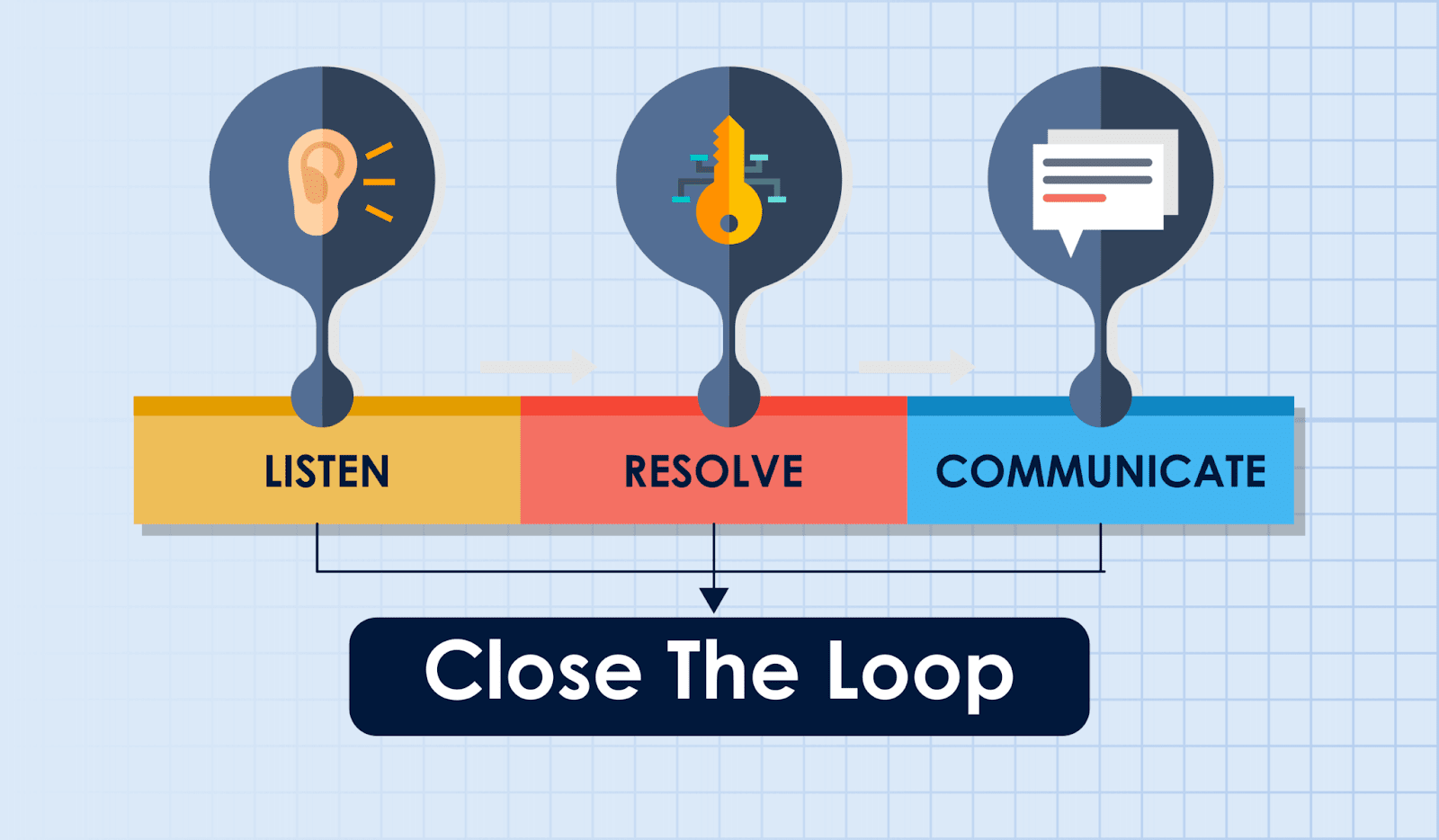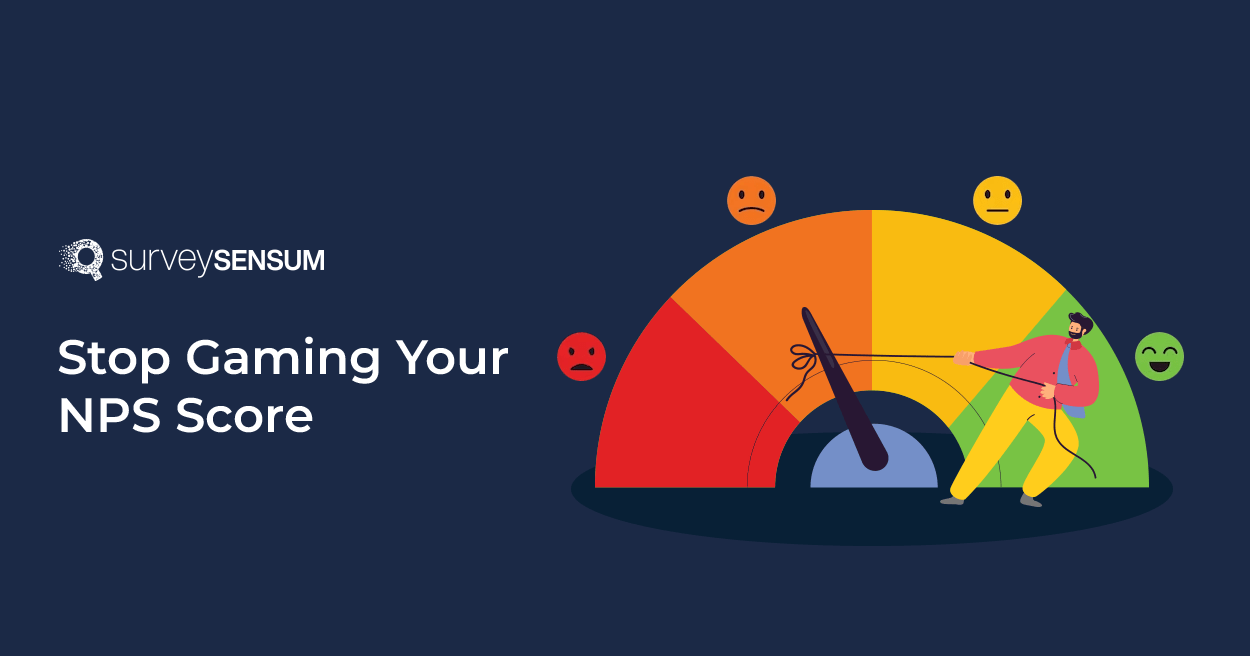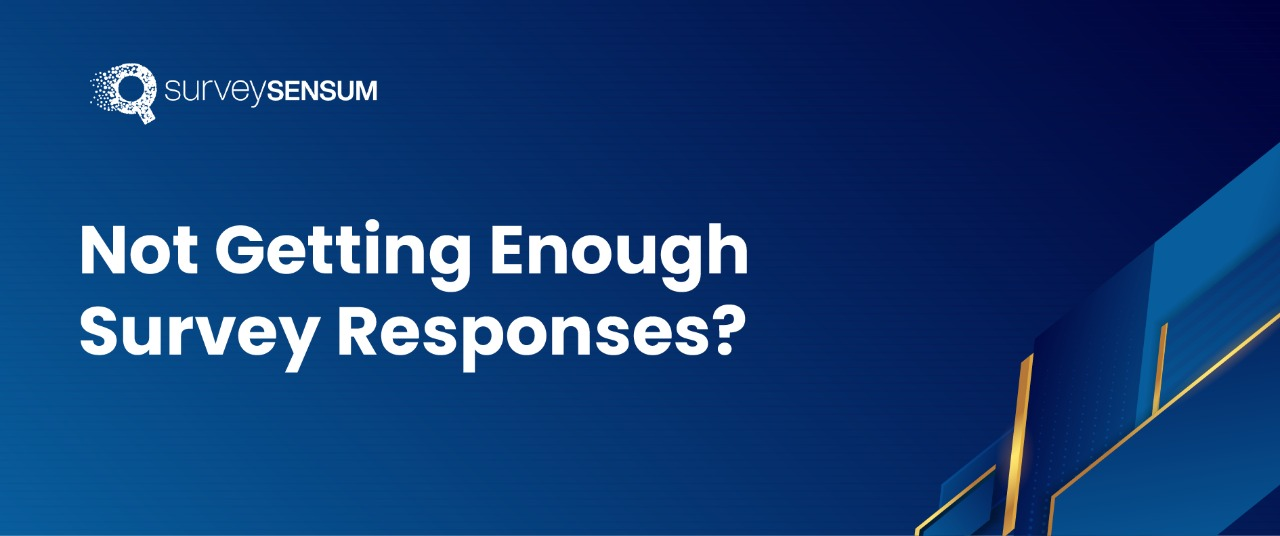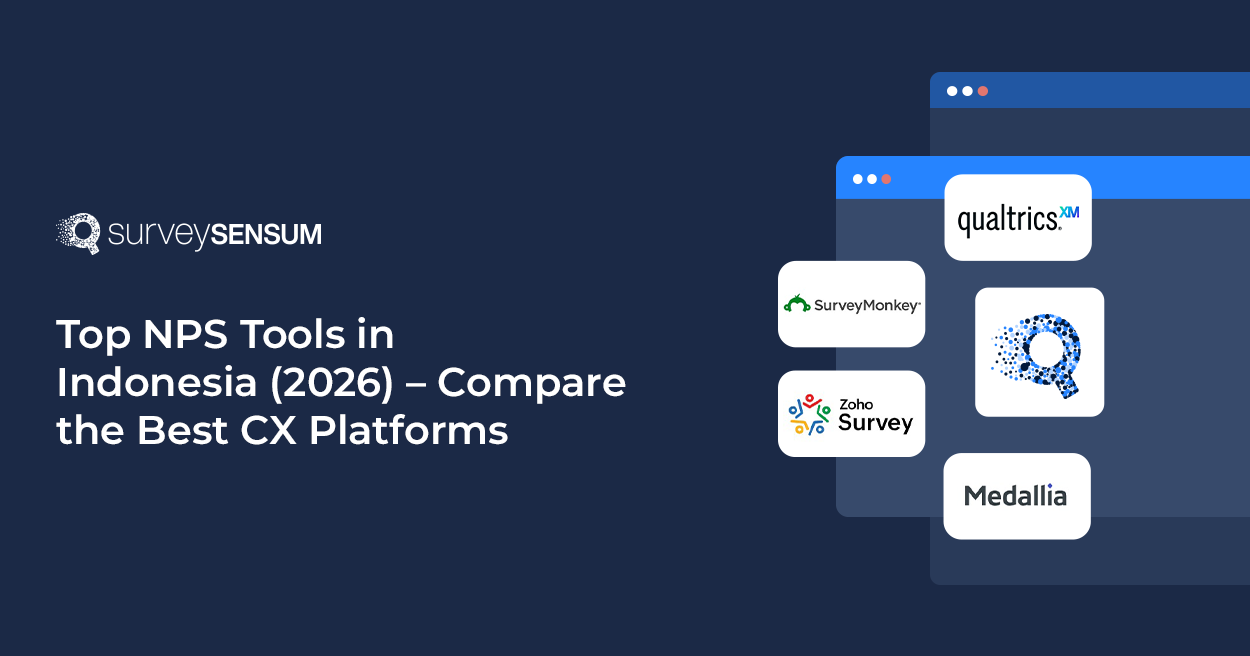

Recently, I contacted the customer support of an electronics brand to address an AC installation issue. Despite having to go through two channels and repeating my problem, I was assured that it would be resolved in 4-5 days. During the call, the agent asked for a 5-star rating in the NPS survey, explaining that it impacted his monthly review and incentive. Despite my dissatisfaction, I gave the rating to avoid negatively affecting someone’s livelihood.
Unfortunately, this is not an isolated case of NPS gaming. Businesses (their agents) use tactics like offering incentives to customers, badgering or threatening customers, etc, to manipulate their NPS scores.
While your NPS score will be high, this only gives you a false sense of growth and even damage your brand’s reputation.
So, how to stop this?
By leveraging NPS to ACTUALLY improve your customers’ experience and not just for the sake of it, or even under peer pressure (yes, peer pressure is here too!) And trust me, with the right strategies in place and the right NPS software to automate the process NPS can be your gold mine to success!
With this blog, we will discuss how businesses do NPS gaming and explore strategies to rectify and avoid NPS gaming.
But first – why should you focus on AUTHENTIC feedback?
The Importance of Authentic Customer Feedback
A company, driven by a desire to impress stakeholders, manipulates NPS scores to portray consistently high customer satisfaction. Decision-makers, relying on these deceptive scores, allocate resources for expansion or new products. However, these manipulated scores don’t reflect actual customer sentiment, resulting in misguided investments that will not align with genuine customer needs.
This misalignment can lead to financial losses and, when the truth surfaces, damage the company’s credibility, erode customer trust, and harm brand reputation.
That’s why authentic NPS feedback is crucial for informed decision-making.
- It provides valuable insights into customer satisfaction, loyalty, and areas needing improvement, which also aids in improving customer retention.
- It allows businesses to understand how well they meet customer expectations and identifies opportunities to enhance the overall customer experience.
But if you are gaming your NPS score and not remaining authentic to it, then what’s the point of creating NPS surveys and launching them in the first place?
If feedback is manipulated or inauthentic, the NPS score loses its value. Decision-makers are led to believe that they are performing well when, in reality, there are significant issues that need attention – you will miss out on understanding what aspect of your business needs improvement.
This is why it is crucial that you, as a business owner, take the necessary steps to ensure that your concerned employees, like your customer support agents, are not using tactics to do NPS gaming.
NPS Gaming by Wells Fargo
Wells Fargo faced a scandal in 2016 when it was revealed that employees had created millions of unauthorized accounts to meet sales targets, impacting NPS. The manipulated scores misled stakeholders, damaged the bank’s reputation, and resulted in significant financial and regulatory consequences, highlighting the real-world impact of falsifying customer-related metrics.
But what are these tactics that you should look out for? Let’s find out!
Common Tactics Used to Game NPS

1. Incentivizing Positive Reviews
Offering incentives for customers who provide positive NPS scores can lead to inflated scores as customers may be motivated to receive a reward rather than providing genuine feedback on their experience. This practice not only skews data but also undermines the authenticity of the feedback collected.
2. Discouraging Negative Feedback
Ever tried to leave a complaint and felt like you were jumping through hoops? Some businesses make it really hard to leave negative feedback. They might bury the tickets or downplay the importance of criticism. This includes overly positive messaging or even fear of repercussions for expressing dissatisfaction.
3. Manipulating survey timings and distribution
Manipulating how and when NPS surveys are sent can significantly impact survey responses. For example, sending surveys only after positive interactions and avoiding times of known issues or only to certain groups who are more likely to give positive responses. It’s like trying to stack the deck in their favor.
4. Focusing on NPS As a metric Rather than Addressing Underlying Issues
NPS is not just about the score, it’s what you do with it that matters the most but companies fail to understand this. When businesses prioritize achieving high NPS scores over addressing underlying issues that contribute to customer dissatisfaction, they risk neglecting crucial areas for improvement.
5. Educating Customers on the NPS Scale
Yes, educating customers about the NPS scale sounds enough but it introduces bias into their response. Providing customers with information about the NPS scale, such as what scores are considered “good” or “bad,” can influence their responses. For example, telling a customer that a rating of 5 will label them as a “detractor” might motivate them to give a higher rating which might not be authentic.
6. Guilt-tripping Customers
Now, the worst tactic of them all is guilt-tripping customers. Agents may use phrases like “I worked really hard on this, please give me a high score” or imply that a low score would affect their performance and they might lose the job. By leveraging guilt or emotional manipulation, they attempt to influence customers’ perceptions and get more favorable ratings.
Now, these are the common tactics businesses use to manipulate their NPS scores, but what are the shortcomings of doing it? Let’s see.
Shortcomings of NPS Gaming
- False sense of success and customer satisfaction: High NPS scores lead businesses to believe they are performing well while underlying issues affecting the customer experience remain unaddressed.
- Potential long-term damage to brand reputation: Customers, once they realize they were misled, become disillusioned, resulting in a negative impact on the brand’s reputation that can be challenging to recover from.
- Hindrance to genuine improvement and customer-centricity: By neglecting the root causes of customer dissatisfaction, businesses miss opportunities to become more customer-centric and deliver better customer experiences.
Want to launch NPS Surveys the right way? Sign up here!
These are the shortcomings of manipulating the NPS score, but how to rectify and avoid them? Let’s find out.
How to Stop Playing Games with Net Promoter System?

So in order to stop playing games with NPS you need strategic planning that requires effective management, transparency, authentic feedback collection methods, and an efficient feedback tool to manage everything. Let’s understand the different strategies you can use to avoid NPS gaming for your business.
1. Impartial Administration
- Avoid having employees directly influence customers’ responses. Direct delivery of surveys to customers ensures that the feedback collected is genuine and not influenced by personal interactions with employees.
- Ensure the appointed person can maintain true objectivity in drafting communications and analyzing client feedback.
- Centralize and automate communication with customers about surveys. This can help prevent intentional gaming. This ensures consistency and eliminates the possibility of employees manipulating the survey process.
2. Closing the Feedback Loop

- Emphasize the importance of the feedback loop process over the NPS score itself.
- Monitor the effectiveness of closing the feedback loop process, ensuring they lead to actual improvements and are not merely closed without action.
- Involve higher-level management and executives in closing the loop process. This can add credibility to the process. This also discourages employees from attempting to manipulate scores, as there is a higher level of accountability.
Get started to close the feedback loop in real-time!
3. Building a Culture of Open Communication with Customers
- Create an environment that encourages open communication, where customers feel comfortable providing candid feedback.
Debbie Szumylo – Nooooo. A foundation of good #CX is transparency and honesty. Pushing for a better #CSAT score cheapens what #CX is about. #CXQOTD
4. Do the Groundwork
- Run the survey program for a year, analyze baseline data, and set realistic goals before implementing any bonus structure.
- Use past survey data to identify customer loyalty drivers and educate employees on positively influencing scores.
5. Educate Employees on NPS
- Educate employees on the strategic importance of NPS in assessing customer satisfaction and loyalty.
- Cultivate a deep understanding of how individual actions contribute to overall NPS outcomes and business growth.
6. Targeted Participation
- Evaluate feedback outreach to ensure it reaches critical customers. It’s not just about getting feedback from anyone – it’s about targeting the customers with significant value or influence for your business.
- Include both individual customers and companies in the assessment. Depending on the nature of your business, feedback from companies can provide valuable insights into larger-scale interactions, such as B2B relationships or corporate partnerships.
7. Threats and Bribery
- Clearly communicate that threats or bribes related to survey responses are unacceptable. Create a company culture that values honesty and integrity in collecting customer feedback.
8. Avoid Guilt-Gaming
- Discourage the practice of making customers feel guilty about their survey responses. Make it clear that feedback should be honest and constructive, and the purpose is to improve services rather than create undue pressure on customers.
9. Avoid Picking Favorites
- Ensure that your survey sample is representative of the entire customer population. Avoid cherry-picking customers who are more likely to provide positive feedback, as this distorts the true picture of customer satisfaction.
10. Prevent Intentional Exclusions
- Implement measures to prevent intentional exclusions of customers who may provide negative feedback. This includes ensuring that survey systems do not allow frontline staff to selectively choose survey participants.
11. Robust Survey System
- Invest in a robust survey system like SurveySensum that will help you minimize NPS gaming. The tool randomizes survey participants which prevents employees from influencing the selection process. It also automates the send-sharing process which ensures little to no involvement of concerned employees.
By adopting these practices, businesses can establish a customer feedback system that is credible, representative, and conducive to continuous improvement. This customer-centric approach contributes to long-term success and customer loyalty.
Conclusion
Gathering customer feedback by using different types of NPS survey is a powerful tool for understanding your customer’s pain points and improving customer experience. However, if the process is not approached with integrity and a genuine commitment then it becomes a curse instead of a boon for your business.
NPS gaming can lead to the creation of a false sense of success, damage the brand’s reputation, and hinder true customer-centricity. To do it correctly, businesses should prioritize impartial administration, allow for anonymous NPS feedback, use clear survey questions, leverage diverse feedback channels, and use a powerful feedback tool.
It is crucial to remember that the right feedback tool can make all the difference here. Use Best NPS software tools such as SurveySensum to automate the entire feedback process. The platform comes with NPS experts who provide you with end-to-end support in implementing your NPS program effectively. From creating surveys to analyzing the feedback to extracting actionable insights and taking action – they make sure your entire NPS program yields the right results, without manipulation.
Frequently Asked Questions
A good NPS score typically ranges from +50 to +100. Scores above +50 are considered excellent and indicate a high level of customer satisfaction and loyalty. However, what constitutes a good NPS can vary by industry and market norms. It’s essential to evaluate your score against competitors with NPS benchmarking and strive for continuous improvement.
2. What is the NPS platform?
An NPS platform is a software solution designed to facilitate the NPS data collection, NPS analysis, and management of NPS data. These platforms automate the process of distributing NPS surveys, aggregating NPS response rates, calculating NPS scores, and generating actionable insights. NPS platforms often include features such as customizable survey templates, real-time NPS reports, and integration with CRM systems.
3. Who created NPS?
NPS was developed by Fred Reichheld, a business strategist, and author, in collaboration with Bain & Company, a global management consulting firm. Reichheld introduced NPS in his 2003 Harvard Business Review article titled “The One Number You Need to Grow.”
Using NPS involves several key steps. First, design a concise survey with the standard NPS survey question and optional follow-ups. Then, distribute the survey through various channels like email, etc. After collecting responses, categorize responses into promoters, passives, and detractors. Then calculate your NPS by subtracting the percentage of detractors from promoters. Analyze trends, identify drivers of satisfaction, and prioritize areas for improvement. Develop action plans, continuously monitor NPS, create brand advocates and track the impact on customer loyalty and business performance.

















